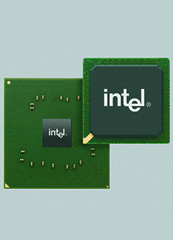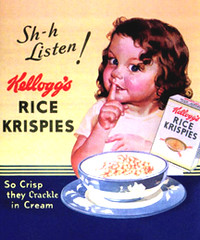Advertising online is the only medium that has seen substantial gains in spending. According to the Internet Advertising Bureau and PricewaterhouseCoopers, Internet ad revenue totaled almost $10 billion, which represents an increase of nearly 27 percent from the same period a year ago.
This is one of the reasons that Intel is bringing a larger portion of its extremely successful co-op advertising budget to the Internet with 10 to 20 percent of its own budget being spent online. And where the “Intel Inside” campaign goes, so goes Intel marketing partners — at least 35 percent of the ad dollars Intel provides must be devoted to online marketing.
“It was a big change for us,” said Kevin Burkum, vice president for marketing at the egg board in Park Ridge, Ill. told The New York Times. “TV is still very important to us, but it’s not the be-all and end-all as it used to be.”
Maybe that’s because Internet users are conducting about 1.4 million searches every minute — with about 60 percent of those searches occurring on Google. At least that is the word on MSNBC. Citing a study by comScore's qSearch 2.0 service, more than 37 billion searches worldwide went through Google in August. (Side note: they just bought Jaiku.)
Yahoo Inc. was second worldwide with 8.5 billion, followed by Baidu at 3.3 billion, Microsoft Corp. at 2.2 billion, and NHN at 2 billion.
With so many searches, online media buyers might be wondering if buying up keywords and Google click-throughs is the way to go. Sure, but it is not the only way and maybe not even the best way.
One of the more compelling studies that I’ve come across is from the Atlas Institute, which points out what I hope other advertisers and marketers know — 67 percent of all consumers are influenced by more than one ad before they purchase. In other words, they might see an ad here and go somewhere else, forget about it, see it again, conduct a search, and then click on it again.
It’s something to think about if you are a content provider. Your click-through ads have a greater chance of supporting someone else’s shared revenue. But more importantly, marketers might be a bit more careful about where they think click-through purchases are coming from … the prospect likely came from somewhere else.
All of it provides great food for thought and suddenly makes concepts like social media relevant. Thinking about this sure beats writing about the bubble. Besides, Eric Eggertson already did an outstanding cover of the bubble buzz around the second departure of the not-so-anonymous Amanda Chapel. I pretty much closed my case study on them in July after discovering they were causing their own brand damage.

This is one of the reasons that Intel is bringing a larger portion of its extremely successful co-op advertising budget to the Internet with 10 to 20 percent of its own budget being spent online. And where the “Intel Inside” campaign goes, so goes Intel marketing partners — at least 35 percent of the ad dollars Intel provides must be devoted to online marketing.
“It was a big change for us,” said Kevin Burkum, vice president for marketing at the egg board in Park Ridge, Ill. told The New York Times. “TV is still very important to us, but it’s not the be-all and end-all as it used to be.”
Maybe that’s because Internet users are conducting about 1.4 million searches every minute — with about 60 percent of those searches occurring on Google. At least that is the word on MSNBC. Citing a study by comScore's qSearch 2.0 service, more than 37 billion searches worldwide went through Google in August. (Side note: they just bought Jaiku.)
Yahoo Inc. was second worldwide with 8.5 billion, followed by Baidu at 3.3 billion, Microsoft Corp. at 2.2 billion, and NHN at 2 billion.
With so many searches, online media buyers might be wondering if buying up keywords and Google click-throughs is the way to go. Sure, but it is not the only way and maybe not even the best way.
One of the more compelling studies that I’ve come across is from the Atlas Institute, which points out what I hope other advertisers and marketers know — 67 percent of all consumers are influenced by more than one ad before they purchase. In other words, they might see an ad here and go somewhere else, forget about it, see it again, conduct a search, and then click on it again.
It’s something to think about if you are a content provider. Your click-through ads have a greater chance of supporting someone else’s shared revenue. But more importantly, marketers might be a bit more careful about where they think click-through purchases are coming from … the prospect likely came from somewhere else.
All of it provides great food for thought and suddenly makes concepts like social media relevant. Thinking about this sure beats writing about the bubble. Besides, Eric Eggertson already did an outstanding cover of the bubble buzz around the second departure of the not-so-anonymous Amanda Chapel. I pretty much closed my case study on them in July after discovering they were causing their own brand damage.



















